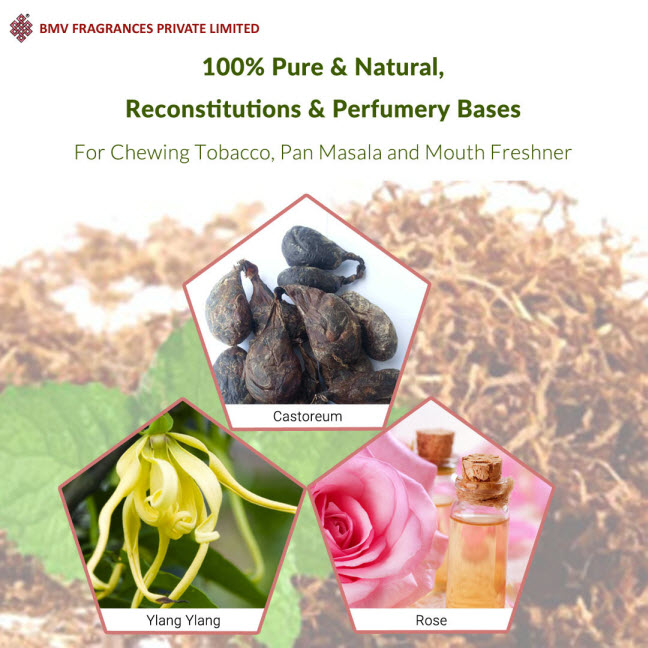
Fragrance oils have the remarkable ability to transport us to different places and evoke a wide range of emotions through their captivating scents. Behind these delightful fragrances lies a fascinating world of chemistry, where various molecules come together to create unique olfactory experiences. In this article, we will delve into the chemical composition of fragrance oils and explore how different molecules contribute to the creation of distinctive scents.
The Historical Evolution of Fragrance Chemistry
The journey of fragrance creation can be traced back to ancient civilizations, where natural aromatic compounds were extracted from plants and animals to create perfumes and incense. Egyptians were among the first to master the art of perfumery, using essential oils for religious ceremonies and personal grooming. Over time, the craft of creating fragrances evolved with the advancement of chemistry, particularly during the 19th century, when scientists began synthesizing molecules like vanillin and coumarin. This opened the door to more diverse and long-lasting fragrances, bridging the gap between art and science in modern perfumery.
The Basics of Fragrance Chemistry
Fragrance oils, whether used in perfumes, candles, or personal care products, are composed of complex mixtures of aromatic compounds. These compounds can be categorized into three main types:
Top Notes:
These are the initial scents that you perceive when you first apply or smell a fragrance. Top notes are typically light and fresh, and they play a crucial role in creating the first impression of a fragrance.
Middle Notes (Heart Notes):
Middle notes emerge after the top notes have evaporated. They form the body of the fragrance and provide its character and personality. Middle notes are often floral, fruity, or spicy.
Base Notes:
Base notes are the deep, long-lasting scents that become noticeable as the fragrance dries down. They give the fragrance its stability and longevity and are often rich and woody.
Natural vs. Synthetic Fragrance Molecules
One of the most significant distinctions in modern perfumery is the use of natural versus synthetic fragrance molecules. Natural molecules, derived from plants, fruits, and flowers, tend to have a more complex and multi-layered scent profile but can be volatile and difficult to harvest in large quantities. Synthetic molecules, on the other hand, allow for more consistency and creativity in fragrance development. They can mimic natural scents or create entirely new ones. For instance, aldehydes, often used to evoke fresh, clean scents, were first synthesized in the early 20th century and remain a cornerstone of modern fragrance creation.
Fragrance Oils vs. Essential Oils: What’s the Difference?
A common misconception is that fragrance oils and essential oils are the same, but they differ significantly in terms of composition and use. Essential oils are extracted directly from natural sources like plants, flowers, and herbs, and they often contain therapeutic properties due to their complex chemical structures. On the other hand, fragrance oils can be natural, synthetic, or a combination of both, and are primarily designed for their scent rather than therapeutic benefits. While essential oils may offer health benefits through aromatherapy, fragrance oils are used mainly for scenting products, making them more versatile in personal care items, candles, and perfumes.


The Chemistry of Aromatic Compounds
Aromatic compounds are at the heart of fragrance chemistry. These compounds contain what is known as an aromatic ring, a stable and unique arrangement of carbon and hydrogen atoms. Aromatic rings can be found in various natural and synthetic fragrance ingredients. Some common aromatic compounds include:
Terpenes:
Found in natural sources like citrus fruits, pine trees, and lavender, terpenes contribute fresh and zesty notes to fragrances. Limonene, for example, is a terpene responsible for the citrusy scent in many fragrances.
Aldehydes:
Aldehydes are synthetic compounds known for their clean and sometimes soapy scents. They are often used as top notes to create a bright and uplifting opening in fragrances.
Esters:
Esters are responsible for fruity and sweet scents. They are abundant in fruits like apples, strawberries, and bananas. Ethyl acetate, for instance, is an ester commonly used in fragrances.
Vanillin:
Vanillin is a primary component of vanilla extract and imparts a warm, sweet, and comforting scent. It is often found in the base notes of fragrances.
Musk Compounds:
Musk compounds create animalic and sensual scents. While some are derived from animal sources, synthetic musks are more commonly used in modern fragrances due to ethical concerns.
Volatility and Fragrance Longevity
A key factor in the performance of fragrance oils is volatility, which refers to how quickly a fragrance molecule evaporates. Volatile compounds, such as top notes like citrus or mint, evaporate rapidly and give an immediate burst of scent. Less volatile compounds, often found in base notes, evaporate slowly, allowing the fragrance to linger on the skin or in the air for hours. The art of perfumery involves balancing the volatility of different components to ensure that the fragrance evolves over time and lasts as long as possible.
The Impact of Temperature on Fragrance Performance
Temperature plays a significant role in how fragrances perform. Higher temperatures can cause fragrance molecules to evaporate more quickly, making the scent more intense initially but shortening its overall longevity. Conversely, colder temperatures can suppress the evaporation of fragrance oils, causing the scent to be subtler and last longer. This is why perfumes often perform differently in summer versus winter. Understanding the chemistry behind temperature fluctuations helps perfumers design scents that maintain their appeal across various climates and conditions.
The Role of Fixatives in Fragrance Oils
Fixatives are essential components in fragrance oils, as they help stabilize the scent and prolong its lifespan. These substances slow down the evaporation of the more volatile top and middle notes, allowing the fragrance to last longer. Common fixatives include ingredients like amber, musk, and resins, which have a low volatility and help anchor lighter, more delicate notes. Fixatives are used in perfumes, candles, and diffusers to enhance the longevity of the scent, ensuring that the fragrance remains rich and full-bodied for an extended period.
The Role of Molecular Structure
The unique scent of each fragrance compound is determined by its molecular structure. Even small changes in the arrangement of atoms can result in vastly different scents. For example:
- Adding or removing carbon atoms can alter the scent from floral to woody.
- Introducing oxygen atoms can make a fragrance more airy or aquatic.
- Modifying the position of double bonds in the molecule can change the scent from fruity to green.
Personal Chemistry and Fragrance Perception
One of the reasons why fragrances smell differently on various individuals is due to personal skin chemistry. Factors like skin type, pH balance, diet, and even body temperature can alter how a fragrance interacts with your skin. For example, those with oily skin tend to retain fragrances longer, while individuals with dry skin might notice the scent fading more quickly. This variation in personal chemistry can explain why the same perfume may smell completely different on two people.
Allergies and Sensitivities to Fragrance Oils
Some individuals may experience allergic reactions or sensitivities to certain fragrance oils, especially those containing synthetic ingredients. Common symptoms include headaches, skin irritation, or respiratory issues. This is why hypoallergenic and fragrance-free products have become more popular for people with sensitive skin. Additionally, regulatory bodies such as the International Fragrance Association (IFRA) provide guidelines for fragrance manufacturers to ensure that certain allergenic compounds are either limited or eliminated. Fragrance chemists must carefully balance the aesthetic appeal of a scent with consumer safety, using safer alternatives whenever possible.
Fragrance Creation as an Art and Science
Creating a fragrance is a delicate balance between art and science. Perfumers and fragrance chemists blend various aromatic compounds in precise proportions to achieve a desired scent profile. They consider factors such as evaporation rates (volatility), persistence, and how the different notes will harmonize over time.
The Science of Layering Fragrances
Layering fragrances, or combining different scents to create a personalized fragrance experience, is an art that relies on an understanding of fragrance chemistry. Perfume lovers often layer top, middle, and base notes from different scents to create a custom blend that evolves throughout the day. However, not all fragrances work well together; some may clash due to conflicting chemical compositions. Successful layering requires knowledge of complementary scent families (such as floral, citrus, or woodsy) and an understanding of how different fragrance molecules interact on the skin.
Fragrance Oils in Candle-Making
Fragrance oils play a crucial role in candle-making, where the goal is to create long-lasting and evenly distributed scents. In candles, fragrance oils are blended with wax to ensure a consistent release of scent as the candle burns. Different types of waxes, like soy, paraffin, and beeswax, interact differently with fragrance oils, affecting how the scent disperses. Candle makers must also consider the flashpoint of fragrance oils— the temperature at which the oil ignites— to ensure that the scent doesn’t degrade or become unsafe during the burning process. The chemistry behind selecting the right fragrance oils for candles is a blend of art and precision.
Sustainability in Fragrance Chemistry
With increasing awareness around environmental impact, the fragrance industry is moving toward more sustainable practices. This includes the use of green chemistry techniques to create synthetic molecules that mimic natural scents without depleting natural resources. Additionally, many fragrance houses are opting for biodegradable ingredients and ethically sourced natural oils to meet consumer demand for eco-friendly products. The future of fragrance chemistry lies in striking a balance between innovation and environmental responsibility.
The Future of Fragrance Chemistry: AI and Biotechnology
The future of fragrance creation is set to be transformed by emerging technologies like artificial intelligence (AI) and biotechnology. AI algorithms can analyze vast databases of fragrance compounds and consumer preferences to predict new scent combinations with high precision. Meanwhile, biotechnology is being used to create bio-identical fragrance molecules that replicate natural scents without harming the environment. These innovations allow perfumers to push the boundaries of creativity while ensuring sustainability, and they also pave the way for custom-tailored fragrances based on individual preferences and skin chemistry.
Fragrance Oils and Sustainability in Packaging
Beyond the ingredients themselves, sustainability in the fragrance industry also extends to packaging. Fragrance oils are often packaged in glass bottles or recyclable materials to reduce plastic waste. Some companies are now experimenting with refillable fragrance containers or biodegradable packaging to further minimize their environmental impact. As consumers become more eco-conscious, the demand for sustainable packaging in the fragrance industry is rising, prompting brands to innovate with greener alternatives that do not compromise on product quality or presentation.
Conclusion
In conclusion, the chemistry behind fragrance oils is a captivating realm where molecules come together to create enchanting scents. Understanding the chemical composition of fragrance compounds helps us appreciate the intricate craftsmanship that goes into crafting the perfumes, candles, and personal care products that enhance our sensory experiences.
Read More Articles
Recent Posts
- Amyris Oil Applications: Versatile Uses Across Various Industries
- The Role of Amyris Oil in the Fast-Growing Wellness Sector: Top 10 Countries Leading the Demand
- Geranium Egyptian Oil Biofunctional Properties: A Valuable Ingredient in Cosmetics, Fragrances, and Wellness
- Vetiver Oil: From Chemical Composition to Global Market Influence
- Agarwood (Oudh) : The Global Market for 'Liquid Gold' - An Industry Worth Billions
- The History and Origins of Balsam Peru
- Asia's Influence on the Global Sandalwood Oil Market
Copyright @ 2025 | BMV Fragrances Private Limited | All Rights Reserved
Website Design & Digital Marketing by webmasterindia.
Website Updated On:




